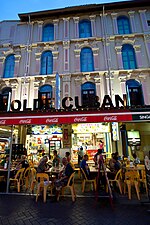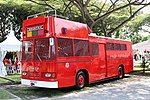Church of Our Saviour, Singapore
Church of Our Saviour or COOS is a church in Queenstown, Singapore, which began as a mission in the 1950s along Alexandra Road and has since grown into a megachurch with a weekly attendance of approximately 4,500. While it is a parish within the mainline Anglican church, COOS is known for its contemporary worship services and charismatic practices like speaking in tongues, faith healing and deliverance. The church is known for its ex-gay ministry Choices, a group formed by Sy Rogers of Exodus International in 1991 to offer conversion therapy of a religious nature.In 2009, a group of women associated with the church engineered a takeover of the Association of Women for Action and Research, alleging that the feminist group was harbouring and pushing a “pro-gay agenda”. They were eventually voted out at an Extraordinary General Meeting. COOS is currently led by Senior Pastor Daniel Wee.
Excerpt from the Wikipedia article Church of Our Saviour, Singapore (License: CC BY-SA 3.0, Authors).Church of Our Saviour, Singapore
Queensway,
Geographical coordinates (GPS) Address Nearby Places Show on map
Geographical coordinates (GPS)
| Latitude | Longitude |
|---|---|
| N 1.2988 ° | E 103.8009 ° |
Address
Queenstown Polyclinic
Queensway
141042 , Queenstown
Singapore
Open on Google Maps






